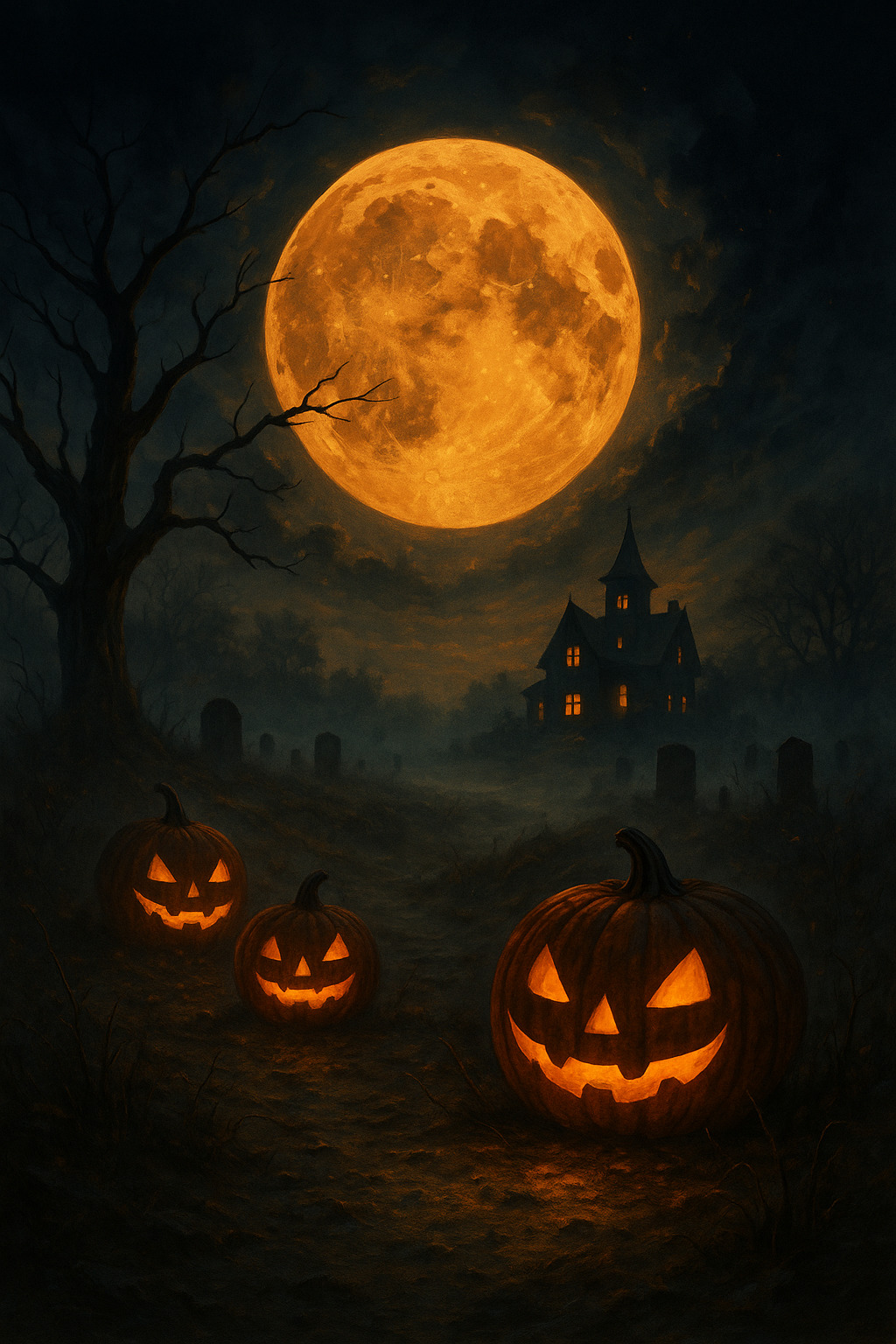👻 Halloween: The Night When the Veil Between Worlds Grows Thin
⭐ Introduction
There’s one night each year when shadows stretch longer, pumpkins glow, and even the wind seems to whisper forgotten names. It’s Halloween — the night when, according to ancient beliefs, the world of the living and the realm of the dead briefly touch, and anything becomes possible.
But what lies beneath the masks, candies, and plastic skeletons? The answer is rooted in ancient rituals, superstitions, fears, and hopes that humanity has carried for millennia.
🔥 Samhain: The Celtic Birth of Mystery
Long before children went door to door shouting “trick or treat!”, the Celts celebrated Samhain, a sacred festival marking the end of summer and the start of the new agricultural year.
They believed that on the night between October 31st and November 1st, the veil between the worlds was as thin as breath.
Fires blazed on hilltops to ward off wandering spirits, while people wore masks and animal skins to confuse the ghosts that roamed their villages.
It was not just a festival — it was a rite of passage, a way to look death in the eye and accept it as part of the natural cycle.
🕯️ From Saints to Jack-o’-Lantern: The Christian and American Transformation
When Christianity spread across Europe, the Church sought to blend its own feasts with pagan ones. Thus came All Saints’ Day (November 1st) and All Souls’ Day (November 2nd).
The evening before became known as All Hallows’ Eve, later shortened to Halloween.
Irish immigrants carried the tradition to the United States in the 19th century, where it merged with folklore and festivity.
The legend of Jack-o’-Lantern — the trickster doomed to wander with a carved pumpkin lantern — replaced Europe’s turnip lamps, giving the holiday its most famous symbol.
In America, Halloween evolved into a blend of carnival, superstition, and consumer celebration. Yet the core remained: laughing at death to defy fear.
🌍 Global Traditions: When the Dead Come Home
Not everywhere celebrates Halloween the same way, but everywhere humanity feels the need to reconnect with the departed.
-
Mexico – Día de los Muertos: a burst of color, sugar skulls, and offerings filled with food and flowers. It’s not about fear, but celebration — the dead join the living for one night.
-
Japan – Obon: lanterns float across rivers to guide ancestral spirits home. Memory and respect are sacred.
-
Italy – All Saints and All Souls’ Day: a quieter tradition of cemetery visits, flowers, and sweet offerings like “bones of the dead” or “sugar dolls” in Sicily.
-
Romania, Spain, the Philippines, Ireland: each culture lights candles, tells stories, and welcomes the return of the unseen.
🕸️ Cinema and Imagination: When Halloween Entered Our Dreams
Hollywood turned Halloween into a global myth.
With John Carpenter’s “Halloween” (1978), the holiday became a symbol of horror — of masks, shadows, and suspense.
From Hocus Pocus to Sleepy Hollow, and Tim Burton’s “The Nightmare Before Christmas”, pop culture reimagined the ancient night of spirits into something playful, eerie, and cinematic.
Today, Halloween is more than a holiday — it’s a cultural aesthetic, a chance to transform, to flirt with fear, and to remember that mystery can still enchant us.
🌒 Conclusion: The Night That Reminds Us We’re Alive
Halloween is more than costumes and candy — it’s a celebration of thresholds: between light and shadow, life and death, memory and myth.
Each glowing pumpkin is a small flame against oblivion, whispering: “I am not afraid. I know everything returns.”
Perhaps that’s the oldest spell of all — not about ghosts or monsters, but about the living who dare to dance with darkness.






